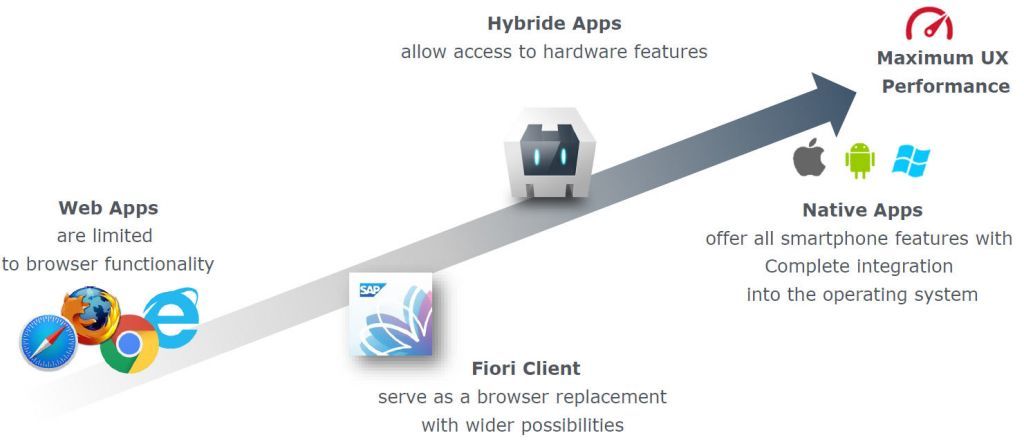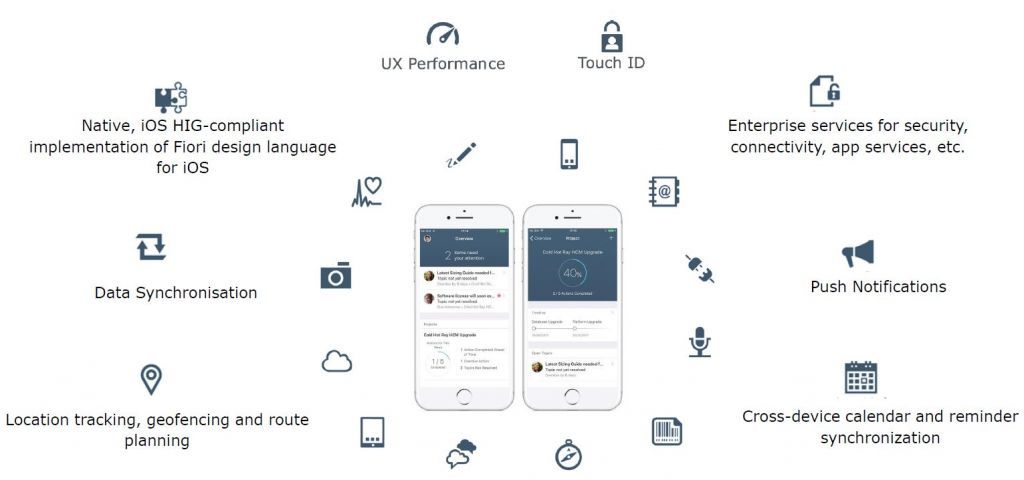Apple and SAP: How You Can Profit from This Partnership

In May 2016, Apple and SAP dropped a bombshell: they were to become partners. A fair amount of time has passed since then. What have they been doing in the meantime? And what does this collaboration mean for SAP customers and developers?
Let’s take a look back at the objective of the partnership between Apple and SAP. According to their press release, it would “revolutionize the mobile work experience for enterprise customers of all sizes [by] combining powerful native apps for iPhone and iPad with the cutting-edge capabilities of the SAP HANA platform.” This left some people wondering what the implications may be. After all, in spring 2016, it was already possible to develop SAP related apps for iOS. What was new, however, was SAP’s enhanced focus on the term “native apps”. But this is exactly what is driving the most change.
To understand this, let’s take a look at the different forms of mobile apps.
- Web apps are applications that run directly in a web browser – in Apple’s case, an example would be the mobile version of Safari. Generally, the performance of the app should match what you would expect from a browser: the ability to surf conveniently using the application. This includes clearly noticeable page loading times in certain cases. Furthermore, apps are limited to the functions supported by the browser. Device-specific functions, such as access to the camera, are not supported.
- The SAP Fiori Client is a type of “extended browser” from SAP that runs web apps. Its extensions allow apps to also use certain device functions. They can, for example, access files and facilitate use of the camera function. The core of the application continues to rely on the browser.
- Hybrid apps are theoretically also web apps. They do not run directly in a browser, but instead in their own native container. This provides access to device services such as GPS or the operating system itself. However, the “detour” from the container limits performance because it still depends solely on the browser engine. The optimal fluid design of a hybrid app is difficult to implement.
- Native SAP Fiori apps, in contrast, work completely independently on the iOS platform: just like Apple’s own calendar or email apps, for example. In the same way, native apps can not only access hardware functions, such as the camera or motion sensor, but can also connect with other apps. They use existing contact details and calendar entries from the device – but only if the user wants this, of course. The result is a real app experience, just as every user knows from the apps they use in daily life.

Develop Better, Faster Apps More Easily
During the course of the partnership, SAP and Apple developed a software development kit (SDK) that allows certain native apps to be created comparatively quickly. Integrated within this is a version of the SAP Fiori design language that complies with Apple’s strict human interface guidelines. That means that all apps created with the SDK fit with the look and feel of the Apple and latest SAP Fiori environment that you are accustomed to.
Above all, various iOS functions can be directly used without the need for costly re-implementation. For example, developers can use Touch ID and Face ID as user identification for their own apps, augmented reality applications are possible, and connecting the app to the SAP Cloud Platform is relatively simple. Included assistants simplify communication between the SAP world and Apple world for the developer.

The partnership between the two companies is relevant to anyone that wishes to provide their employees with mobile enterprise applications or customize them. The fast implementation of innovative features like augmented reality or even machine learning saves time and frustration. Both can be instrumental on the path to the digital future.
– Christian Lindner, Customer Solutions & Inventions,
Head of UX Design, NTT DATA Business Solutions AG